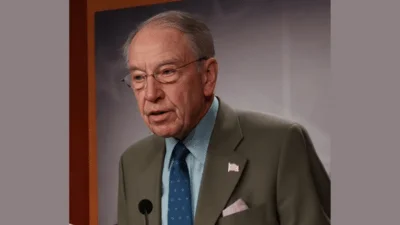The Congressional Record is a unique source of public documentation. It started in 1873, documenting nearly all the major and minor policies being discussed and debated.
“THE MYTH OF THE MAGIC BUREAUCRAT” mentioning the U.S. Dept. of Commerce was published in the House of Representatives section on pages H2463-H2464 on March 19, 1996.
The publication is reproduced in full below:
THE MYTH OF THE MAGIC BUREAUCRAT
The SPEAKER pro tempore. Under a previous order of the House, the gentleman from Michigan [Mr. Hoekstra] is recognized for 5 minutes.
Mr. HOEKSTRA. Tonight I want to talk a little bit about actually building off the comments of my colleague about the need to downsize Government. I think we, as a Nation, have kind of become afflicted with what I call the myth of the magic bureaucrat. What is the magic bureaucrat, or what is the myth of the magic bureaucrat? The myth of the magic bureaucrat is the widely accepted belief that Government bureaucrats spending taxpayer money can solve all of our Nation's problems. More importantly, the description says that a magic bureaucrat is more able to spend our money more effectively than what the taxpayer can.
Why is this a myth? The magic bureaucrat is a myth because it is popular and it is a widely held belief, but it is fundamentally untrue and unsustainable by objective reality.
Who believes this myth? Mr. Speaker, I believe that the President and many other policy-makers in Washington believe this myth. What does a magic bureaucrat do? A magic bureaucrat creates illusions like David Copperfield and the great Houdini.
Tonight we want to just talk about two of these great illusions that have been created by the magic bureaucrat.
Mr. Speaker, we had hearings on one of these today at the oversight subcommittee. Bureaucrats at the corporation for national service, they are trying to convince the committee, they are trying to convince the American people, that a Federal corporation can do a better job of volunteerism and community service than actual volunteers in the community and actual nonprofit organizations that have been a heritage of this Nation for as long as we have been in existence.
That is the myth, that they can do it better. The reality is they cannot do volunteerism, they cannot do community service. As a matter of fact, what we pointed out in the hearing today is they cannot even keep the books straight.
A second myth is one that has been perpetuated or is being developed by the bureaucrats at the Department of Education, and that is that the Department of Education can do Federal loans or student loans more effectively than the private sector. We have a colleague here who would like to just describe that illusion for us.
Mr. GRAHAM. Mr. Speaker, I thank the gentleman for yielding. The facts are as follows:
There are 900,000 financial aid applications that are backlogged, and the article, Chronicle of Higher Education, the article entitled
``Sorting Out a Foul Up In Student Aid'' says the following. Student aid experts say their backlog of 900,000 financial aid applications was caused by mismanagement of the Department of Education and that it calls into question the department's ability to manage the student aid system.
I congratulate the gentleman for having oversight hearings in this whole area of the Government trying to do for the private sector what we know the private sector can do best, volunteering and run a program of lending money. If the administration has its way, the student loan portfolio will be turned over to the Federal Government through the Department of Education, and they will not only process the applications, they will become bankers collecting the money for the taxpayer, lending the money as a bank would do. I suggest to you, Mr. Hoekstra, that would be a disastrous event, that they have a 900,000 backlog in just processing applications.
Can you imagine if they also lent the money and had to collect the money?
And their excuse for a 900,000 backlog is it snowed and the Government shut down 21 days. Both are false. The private sector gets up and goes to work when it snows because they are in it as a way of making their living. The Government shutdown did not effect the ability to process these loans because contractors are the main source of doing the processing. It just shows how inefficient the magic bureaucrats are, and, when analyzed against the facts, they do not do very well.
Mr. HOEKSTRA. These are just 2 examples: The Corporation for National Service, the direct lending program. There are many more. Bureaucrats at the Commerce Department know another myth is that the bureaucrats at the Commerce Department know how to create high-skilled, high-paying jobs better than American entrepreneurs, that bureaucrats at the Department of Education know better than parents, and teachers, and local schools how to run a tutoring or mentoring program in their local community.
The bottom line is who pays for these magic shows? It is the American people. It is you and I. How much have we spent? Trillions.
The real question that the American people have to ask is can we afford any more of these shows. You be the judge.
I yield to the gentleman.
Mr. GRAHAM. While you are conducting hearings, there is another area that I would like you to look into that I have asked the GAO to investigate, and that is that there are millions of dollars of unreconciled money responsible by the Department of Education. We need to find out where the money is at.
Mr. HOEKSTRA. I thank the gentleman for his suggestion. We will pursue that.
____________________








